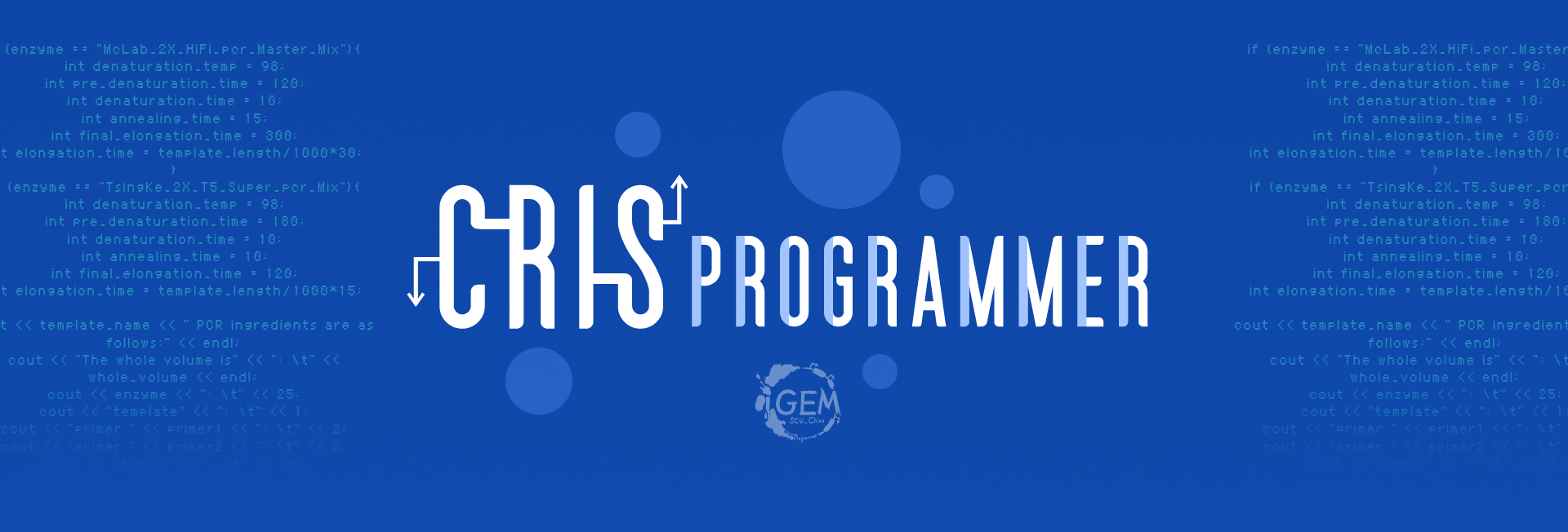At the beginning, our logic circuit of CRISProgrammer was a little bit complex for we wanted to use CRISPR-dCas9 system to regulate the expression of multi genes and make our system have complicated functions. But after we had held the Sichuan University 2018 Architects Competition of Microorganism Application (SCU-ACMA) (a theoretical design competition sponsored by SCU-iGEM) and watched several projects about microbiology and industrial production, we realized that it would be better to simplify the logic circuit just as what other teams had done if we want to use it in industrial production. So, we cut down the genes we used and simplified the system so that it would be more stable.
Later in the communications with students from Shishi High School and the summer camp students of Chengdu University of Information Technology, we are asked some questions which remind us of the details of CRISProgrammer, such as the cost, the environmental effects, the maneuverability, the safety and so on. We took all of them into consideration and polished our project design. For example, we used fluorescent proteins and double antibiotic resistance to select the expected engineered bacteria and observe their gene expression.

Improvement
Experiments
When we started our experiments, some problems followed. In this period, we got many help from other people based on the human practice. In the China iGEM Southwest Union (iSWU), “UEST-China” and “SiCAU-China” reminded us of the difficulty to clone a coding sequence in a genome. So we decided to clone genes of sgRNA and dCas9 into engineered vectors firstly.
And in the 5th Conference of China iGEMer Community (CCiC), Dr. Haotian Guo suggested that when we use CRISPR-dCas9 system to regulate the expression of multiple genes, we should consider that so many sgRNAs will occupy dCas9 protein, which directly leads to the decrease of efficiency of targeted gene regulation. With the consideration of his suggestion, we kept our regulatory system containing a small number of sgRNAs.
What’s more, we also interviewed Dr. Yunzi Luo, first PI of SCU-WestChina in 2017 iGEM, as well as an expert in synthetic biology field. She advised us to try other kinds of promoters for sgRNA expression, and we took her suggestion willingly.
And in the 5th Conference of China iGEMer Community (CCiC), Dr. Haotian Guo suggested that when we use CRISPR-dCas9 system to regulate the expression of multiple genes, we should consider that so many sgRNAs will occupy dCas9 protein, which directly leads to the decrease of efficiency of targeted gene regulation. With the consideration of his suggestion, we kept our regulatory system containing a small number of sgRNAs.
What’s more, we also interviewed Dr. Yunzi Luo, first PI of SCU-WestChina in 2017 iGEM, as well as an expert in synthetic biology field. She advised us to try other kinds of promoters for sgRNA expression, and we took her suggestion willingly.
Application
Our team has always focused on transforming scientific theories into practical technologies and solving the existing issue seen in the society. Thus, we tried to use CRISProgrammer in biosynthesis of indigo, which can solve the pollution problem of chemical synthesis and provide a better way to store and transport the engineered bacteria.
We are concerned about indigo because of a visit of a Xiangxi batik workshop. After that trip we knew that indigo is an important ancient dye and it is also the material of batik--an ancient folk traditional textile printing and dying craft in China. However, there are many shortcomings of the modern process of producing indigo. So we decided to find a better way to produce indigo, which means biosynthesis combining CRISProgrammer.
In all of the above mentioned interview, study and communication, we obtained information and assistance that pushed us forward and enabled us to complete our project step by step. Finally, through our own hard work and the generous help of others, we finished a thorough, complete project with practical value.
We are concerned about indigo because of a visit of a Xiangxi batik workshop. After that trip we knew that indigo is an important ancient dye and it is also the material of batik--an ancient folk traditional textile printing and dying craft in China. However, there are many shortcomings of the modern process of producing indigo. So we decided to find a better way to produce indigo, which means biosynthesis combining CRISProgrammer.
In all of the above mentioned interview, study and communication, we obtained information and assistance that pushed us forward and enabled us to complete our project step by step. Finally, through our own hard work and the generous help of others, we finished a thorough, complete project with practical value.
